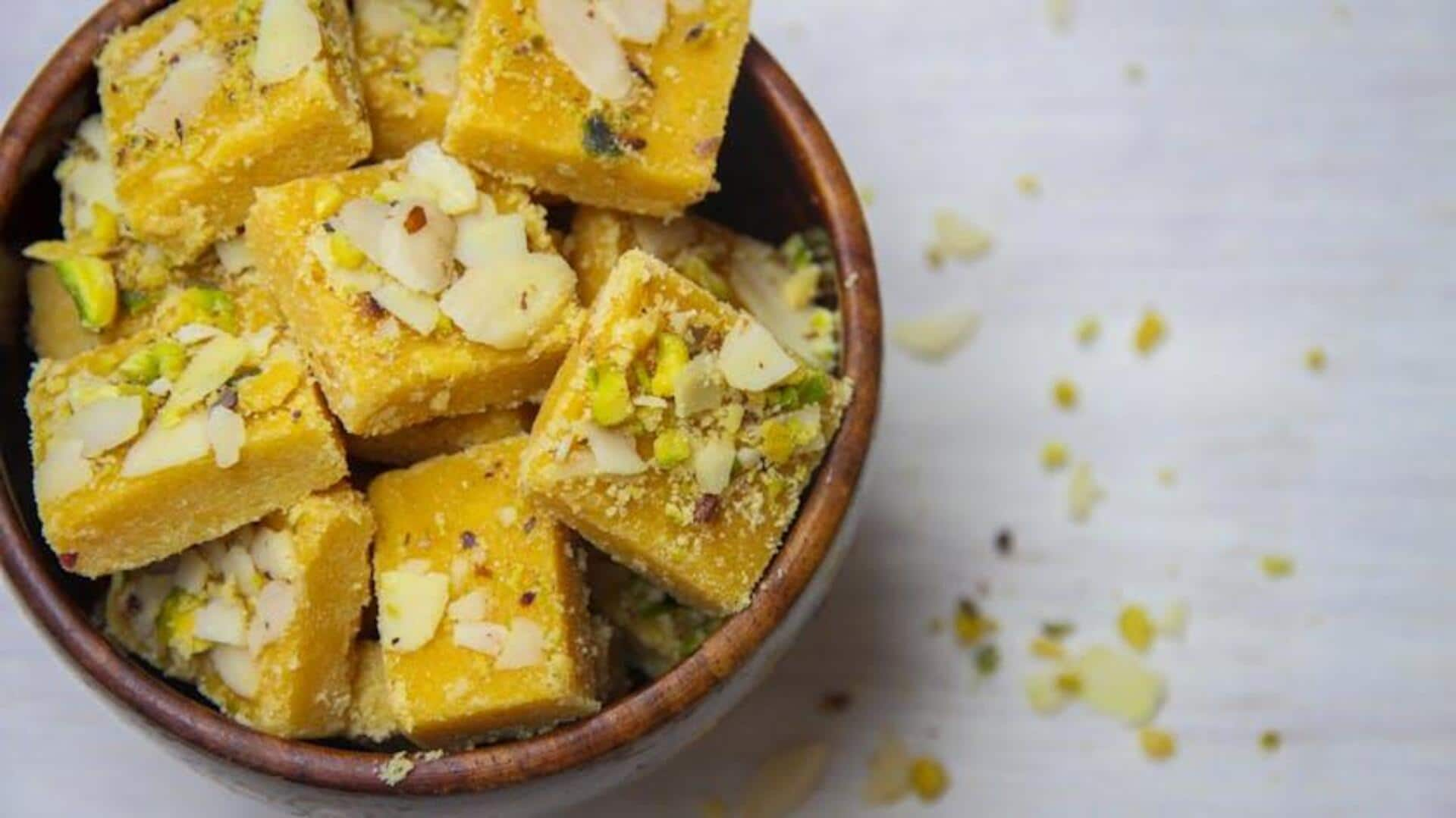
Barfi's journey: Origin, history, and evolution
What's the story
Barfi, a beloved Indian sweet, has a rich history that dates back centuries. This delectable treat is made from milk, sugar, and various flavorings, and has evolved over time to become a staple in Indian households during festivals and celebrations. Its journey reflects the cultural and culinary changes in India, showcasing regional variations and adaptations that have made it a favorite across the country.
#1
Ancient origins of Barfi
The origins of barfi can be traced back to ancient India when it was first prepared with simple ingredients such as milk and sugar. These early versions were often flavored with cardamom or saffron. As trade routes expanded and spices became more accessible, barfi recipes evolved to include nuts and dried fruits. This evolution marked the beginning of barfi's journey as a cherished sweet across the Indian subcontinent.
#2
Regional variations across India
As barfi traveled across different regions of India, it adapted to local tastes and ingredients. In Maharashtra, for example, coconut is a popular addition, while in Punjab, khoya is often used for richness. Each region's unique take on barfi highlights the diversity of Indian cuisine while maintaining its core identity as a beloved sweet treat.
#3
Barfi in modern times
In modern times, barfi has adapted to changing palates by introducing innovative flavors such as chocolate or fruit-based varieties. However, traditional versions still remain popular during festivals like Diwali or weddings. The versatility of this sweet allows it to cater to both traditionalists who prefer classic flavors and those looking for contemporary twists.
#4
Cultural significance of barfi
Barfi holds cultural significance beyond just being a dessert; it symbolizes celebration and togetherness in Indian culture. It is often gifted during festivals or special occasions as a gesture of goodwill or appreciation. Its presence at gatherings signifies joyfulness shared among family members or friends alike.